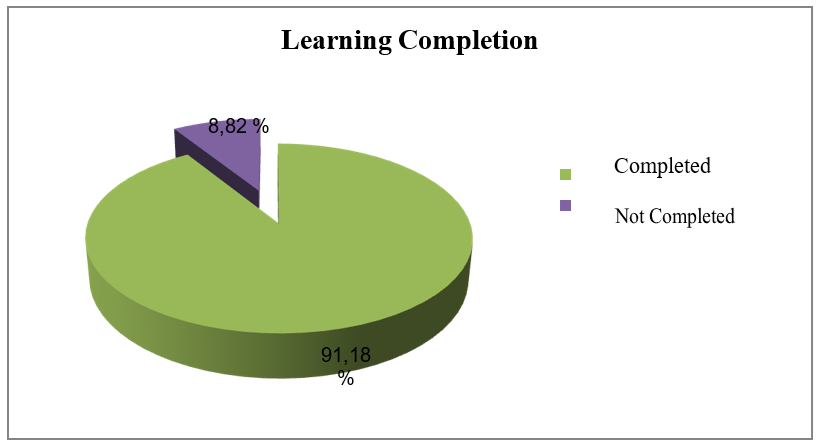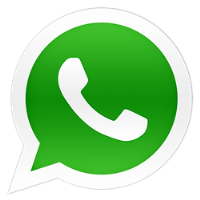Problem-Based Learning Model to Improve High School Students' Knowledge of Athletics Sports Material Learning Achievement
DOI:
https://doi.org/10.51574/ijrer.v4i1.318Keywords:
Athletics Sports Material, High Jump, High School Students', Learning Achievement, Problem-Based LearningAbstract
The objective of this study was to determine the improvement of student learning achievement in athletics material through the problem-based learning model. This type of research is classroom action research with two cycles. At MA Al-Hikmah Purwoasri, the research sample consisted of 24 students. We conducted this research through a cycle of planning, implementation, observation, reflection, and data collection. The instruments used in this study were test and observation techniques. The data analysis used a quantitative description. The results of the study showed that there was a significant increase in student athletics learning achievement after the problem-based learning model was implemented. This is clear from the results of cycle I, where 47% of the students did not meet the minimum completion criteria of 75, and the class average was only 78.01. On the other hand, cycle II results showed that 91.18% of the 24 students who took the test met the minimum completion criteria of 75. Therefore, the application of the problem-based learning model can enhance student learning achievement in athletics material, particularly in the high jump.
References
Aji, R. B., Setiyawan, S., & Fahmi, D. A. (2020). The effectiveness of problem based learning model learning achievement of basketball learning through audio visual media in class I ips 1 sma N 2 kendal students. Journal of Sport Coaching and Physical Education, 5(1), 42-47.
Anggraeni, D. M., Prahani, B. K., Suprapto, N., Shofiyah, N., & Jatmiko, B. (2023). Systematic review of problem based learning research in fostering critical thinking skills. Thinking Skills and Creativity, 49, 101334.
Anwar, N. I. A., Hamzah, A., & Aksir, M. I. (2024). Fitness Education Model to Improve Learning Achievement of PJOK Subjects: A Focus Senior High School Students. ETDC: Indonesian Journal of Research and Educational Review, 3(4), 110-117.
Askildsen, C. E. M., & Aggerholm, K. (2024). Practising in physical education: a phenomenologically grounded study of student experiences. Sport, Education and Society, 29(9), 1041-1055.
Aslan, S. A., & Duruhan, K. (2021). The effect of virtual learning environments designed according to problem-based learning approach to students’ success, problem-solving skills, and motivations. Education and Information Technologies, 26(2), 2253-2283.
Brunsdon, J. J., & Walker, D. I. (2022). Cultivating character through physical education using memetic, progressive and transformative practices in schools. Journal of Moral Education, 51(4), 477-493.
Dapena, J. (2000). The high jump. Biomechanics in Sport: Performance Enhancement and Injury Prevention, 284-311.
De la Fuente, C., Ramirez-Campillo, R., Gallardo-Fuentes, F., Alvarez, C., Bustamante, C., Henríquez, H., & Carpes, F. P. (2022). Pattern analysis of a complete Achilles tendon rupture suffered during high jump preparation in an official national-level athletic competition. Sports Biomechanics, 21(3), 312-322.
Fitri, M., Zainal Abidin, N. E., Novan, N. A., Kumalasari, I., Haris, F., Mulyana, B., ... & Yaacob, N. (2022). Accessibility of inclusive sports facilities for training and competition in Indonesia and Malaysia. Sustainability, 14(21), 14083.
Friskawati, G. F., Ma’mun, A., & Mahendra, A. (2023). A Consideration of Physical Literacy for Sports Policy in Indonesia. Asian Journal of Sport History & Culture, 2(3), 335-349.
Gonzalez, L. (2019). The problem-based learning model. In 2019 eighth international conference on educational innovation through technology (Eitt) (pp. 180-183). IEEE.
Habyarimana, J. D. D., Tugirumukiza, E., & Zhou, K. (2022). Physical education and sports: A backbone of the entire community in the twenty-first century. International Journal of Environmental Research and Public Health, 19(12), 7296.
Han, H., Papanagnou, D., & Cho, Y. (2024). Bridging human resource development and health professions education through action learning. Human Resource Development Review, 23(2), 151-163.
Hasbi, M., & Fitri. (2023). Pre-Service Teachers with Courses in Problem-Based Learning in Mathematics. ETDC: Indonesian Journal of Research and Educational Review, 2(2), 51-60.
Hulu, A. W., Dlis, F., Tangkudung, J., & Halim, A. (2023). The" Fahombo Batu" High Jump Training Model for Students Ages 13-15. In Proceedings of International Conference on Physical Education, Health, and Sports (Vol. 3, pp. 62-67).
Kim, J. (2024). Leading teachers' perspective on teacher-AI collaboration in education. Education and Information Technologies, 29(7), 8693-8724.
Li, C., & Zhang, C. (2024). Exploring the Current Landscape of Primary School Physical Education Within the Framework of the New Curriculum Reform: A Quality Evaluation Model Perspective. Journal of the Knowledge Economy, 1-22.
McCosker, C., Renshaw, I., Russell, S., Polman, R., & Davids, K. (2021). The role of elite coaches’ expertise in identifying key constraints on long jump performance: how practice task designs can enhance athlete self-regulation in competition. Qualitative Research in Sport, Exercise and Health, 13(2), 283-299.
Muzaini, M., Hasbi, M., Ernawati, E., & Kristiawati, K. (2022). The Empowerment of Problem-Based Learning Models to Improve Students’ Quantitative Reasoning. Formatif: Jurnal Ilmiah Pendidikan MIPA, 12(1).
Pacholek, M., & Zemková, E. (2022). Effects of verbal encouragement and performance feedback on physical fitness in young adults. Sustainability, 14(3), 1753.
Phungsuk, R., Viriyavejakul, C., & Ratanaolarn, T. (2017). Development of a problem-based learning model via a virtual learning environment. Kasetsart Journal of Social Sciences, 38(3), 297-306.
Onu, P., Pradhan, A., & Mbohwa, C. (2024). Potential to use metaverse for future teaching and learning. Education and Information Technologies, 29(7), 8893-8924.
Rahayu, N. I., Suherman, A., & Jabar, B. A. (2018). Hybridising teaching personal social responsibility (TPSR) and problem based learning (PBL) in Physical Education. Jurnal Pendidikan Jasmani dan Olahraga, 3(2), 101-111.
Refiater, U. H. (2012). Hubungan Power Tungkai Dengan Hasil Lompat Tinggi. Jurnal Health and Sport, 5(03).
Said, H., & Hanafi, S. (2023). Motoric Potential of Freshmen in Physical Education, Sports and Health Study Program (PJOK) Faculty of Sports and Health Universitas Negeri Gorontalo Class of 2022. ACTIVE: Journal of Physical Education, Sport, Health and Recreation, 12(2), 130-137.
Suryadarma, D., & Jones, G. W. (Eds.). (2013). Education in Indonesia. Institute of Southeast Asian Studies.
Van Caekenberghe, I., Derave, W., Lenoir, M., Segers, V., Aerts, P., & De Clercq, D. (2021). Traditional high jump Gusimbuka Urukiramende: Could early 20th century African athletes beat Olympic champions?. Journal of Sports Sciences, 39(16), 1800-1806.
Wang, B., & Chen, S. (2021). Sport education for social competence in K-12 physical education. Quest, 73(4), 391-409.
Wintle, J. (2022). Physical education and physical activity promotion: lifestyle sports as meaningful experiences. Education Sciences, 12(3), 181.
Yew, E. H., & Goh, K. (2016). Problem-based learning: An overview of its process and impact on learning. Health professions education, 2(2), 75-79.
Zhu, W., & Li, J. (2022). Analysis and exploration on the integration of mental health education into college physical education practice. Computational Intelligence and Neuroscience, 2022(1), 5195909.

Downloads
Published
How to Cite
Issue
Section
License
Copyright (c) 2025 ETDC: Indonesian Journal of Research and Educational Review

This work is licensed under a Creative Commons Attribution-ShareAlike 4.0 International License.













1.png)













